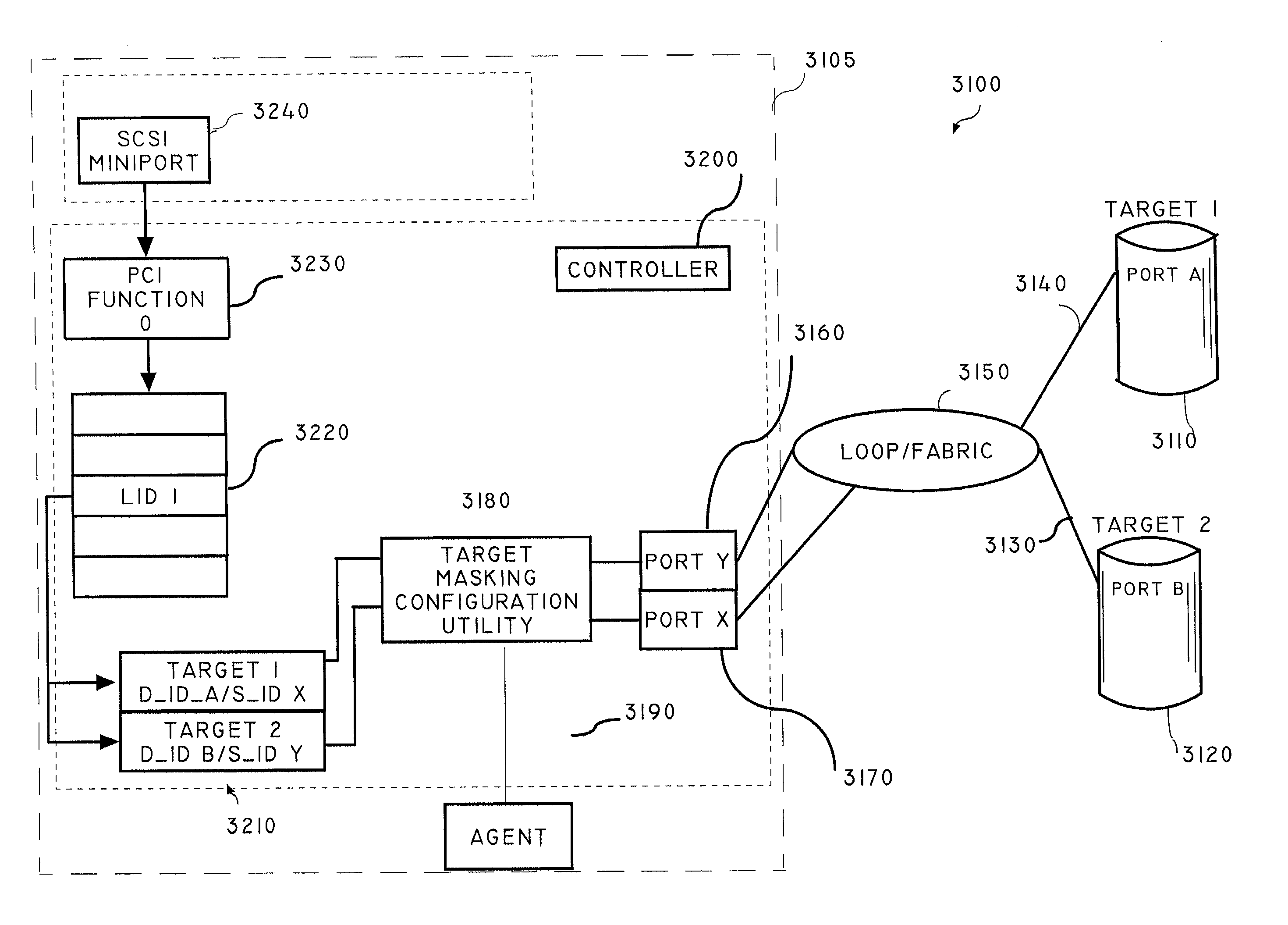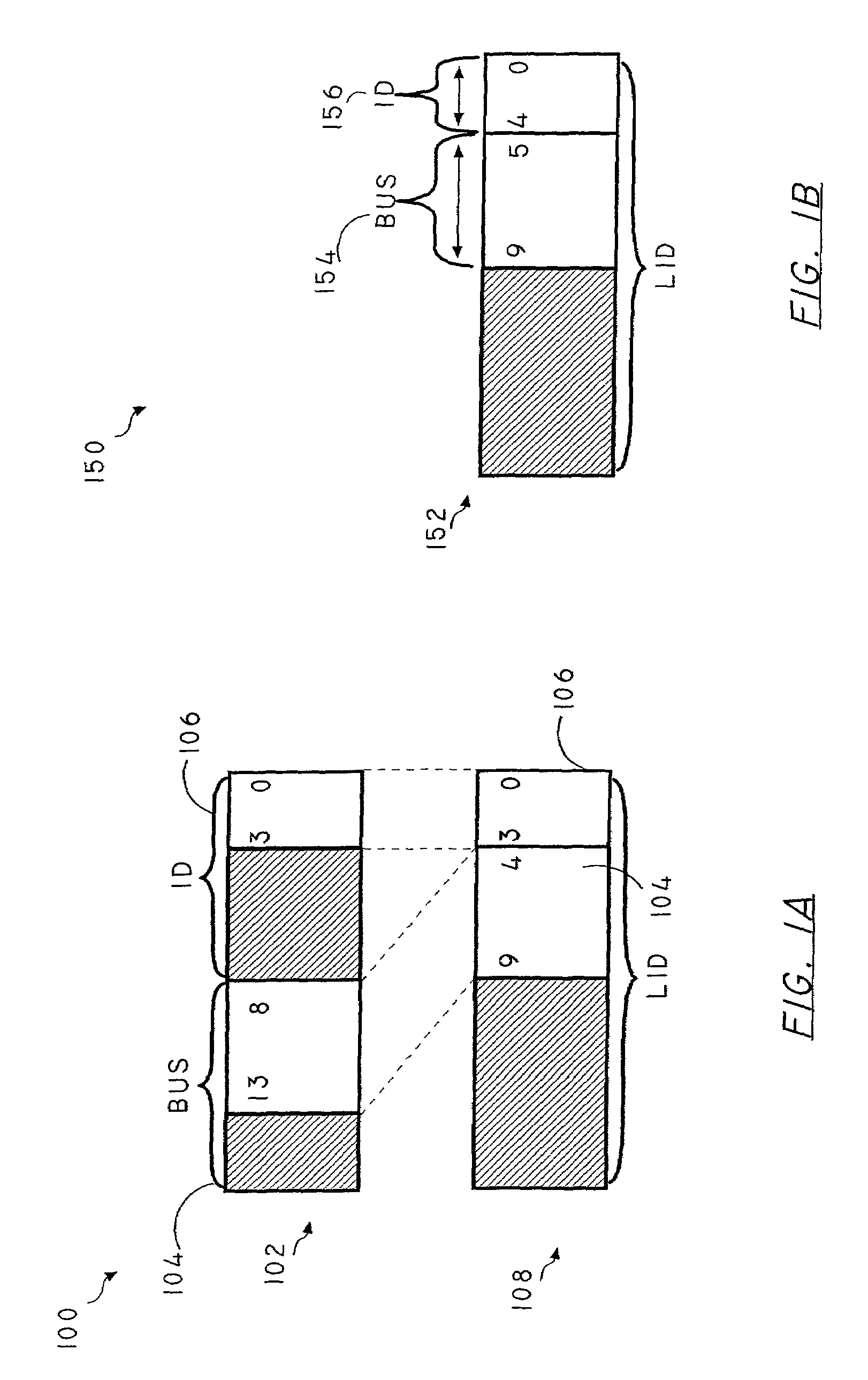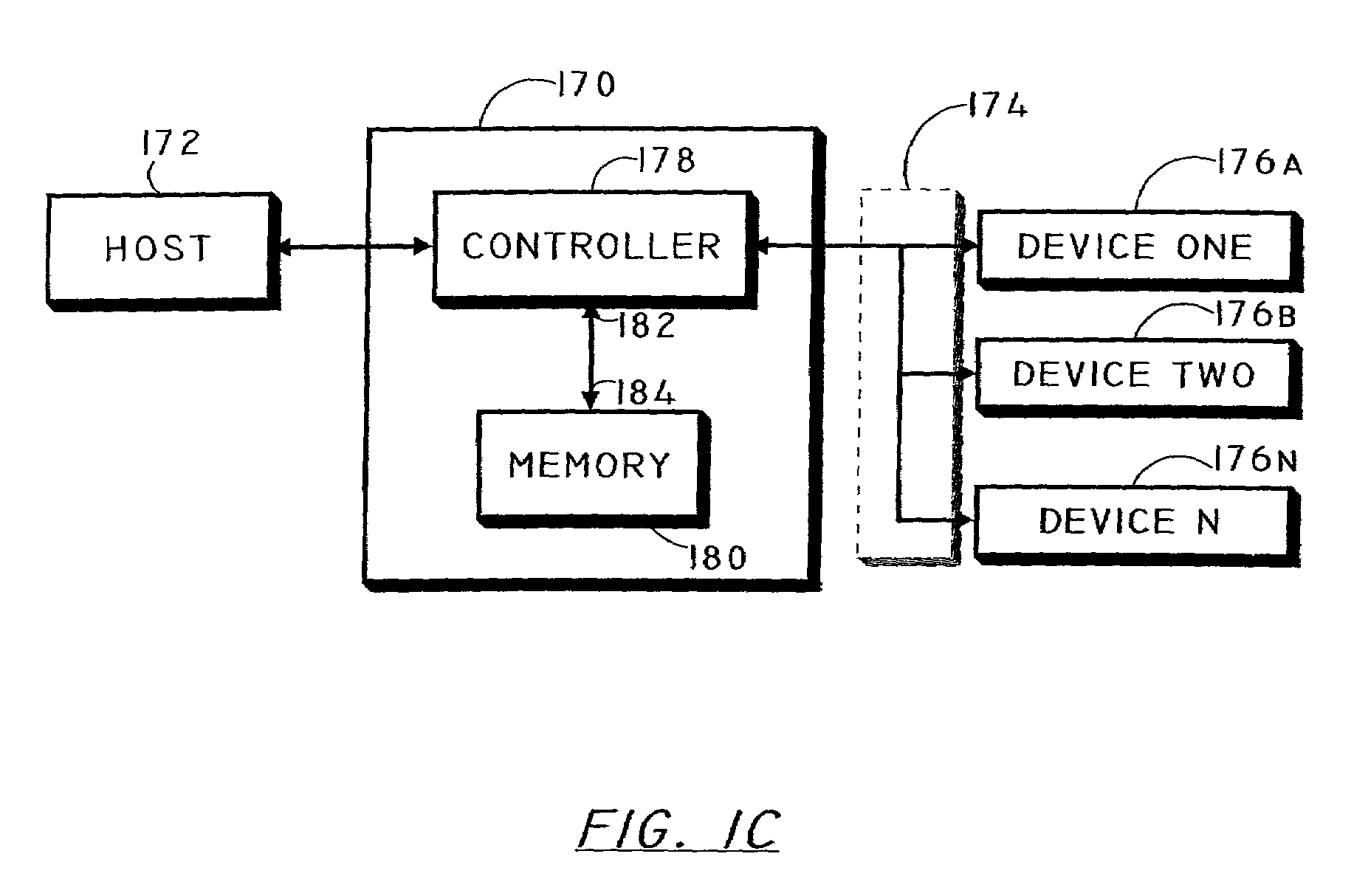Integrated target masking
a target masking and target technology, applied in the field of network communications, can solve the problems of limiting targets, lun masking also does not permit lun masking targets, and requires relatively high development costs, so as to achieve greater flexibility, reduce costs, and reduce costs
- Summary
- Abstract
- Description
- Claims
- Application Information
AI Technical Summary
Benefits of technology
Problems solved by technology
Method used
Image
Examples
embodiment 100
[0065]Referring now to FIG. 1A, an embodiment 100 of the present invention is shown wherein a logical identifier (LID) format is configured to provide static logical mapping to a target. A host, when providing an identifier 102, may include two 8-bit fields, a bus field 104 and an Id 106. An input / output controller (IOC), upon receiving the identifier 102, shifts the bus field 104 to create a logical identifier (LID) 108. The number of shifts is dependent upon the number of Ids per Bus the Host's OS supports. Thus, a linear 16-bit value suitable for indexing is provided which is less confusing to host driver developers, more efficient, and is compatible with a wide variety of bus formats, such as small computer system interface (SCSI) and the like.
embodiment 150
[0066]Referring now to FIG. 1B, an embodiment 150 of the present invention is shown wherein a dynamic logical identifier (LID) format is configured to provide logical mapping to a target. A logical identifier 152 includes two variable sized fields, such as a bus field 154 and an ID field 156. Thus, a linear 16-bit value may be created which is suitable for indexing. The host and the IOC look at the same 16-bit value, just from two different perspectives. In this example, an input / output controller (IOC) does not need to be aware of the number of Ids per Bus the Host's OS supports. This option offers great scalability, and control over the number of buses and IDs supported by the IOC.
[0067]Referring now to FIG. 1C, an embodiment of the present invention is depicted wherein a block diagram of an input / output interface 170 suitable for operation as an input / output interface employing logical identifiers of the present invention is shown. The input / output interface 170 may be, in one ex...
embodiment 370
[0081]Referring now to FIG. 3C, an embodiment 370 of the present invention is shown wherein a single ported initiator is connected to a single port on a target. A host 372 and the like, includes an input / output interface 374 for communicatively coupling the host 372 over a loop / fabric 376 to a target 378, such as an electronic data storage device, which may include a RAID array, hard disk drive, and like data storage system.
[0082]The input / output interface 374 is connected to an interface of the host, such as a SCSI miniport 380, through an internal PCI interface 382. The input / output interface 374 further includes a logical identifier table 384, which, when used in conjunction with a target routing table 386 is suitable for describing a data transfer route between the host 372 and the target 378. The LID 388 of the logical identifier table 384 is referenced in conjunction with the target routing table 386 to indicate a path 390 to the target 378, such as through port Y 392. For ins...
PUM
 Login to View More
Login to View More Abstract
Description
Claims
Application Information
 Login to View More
Login to View More - R&D
- Intellectual Property
- Life Sciences
- Materials
- Tech Scout
- Unparalleled Data Quality
- Higher Quality Content
- 60% Fewer Hallucinations
Browse by: Latest US Patents, China's latest patents, Technical Efficacy Thesaurus, Application Domain, Technology Topic, Popular Technical Reports.
© 2025 PatSnap. All rights reserved.Legal|Privacy policy|Modern Slavery Act Transparency Statement|Sitemap|About US| Contact US: help@patsnap.com



